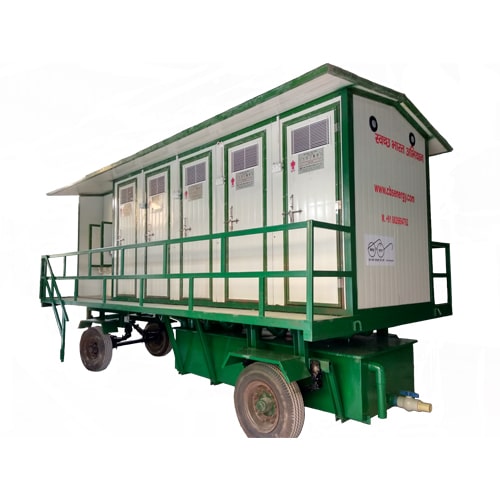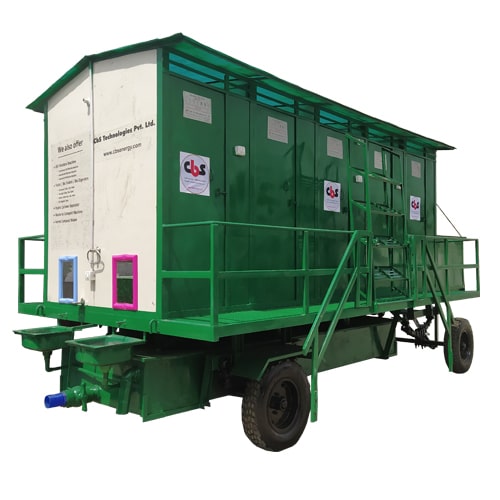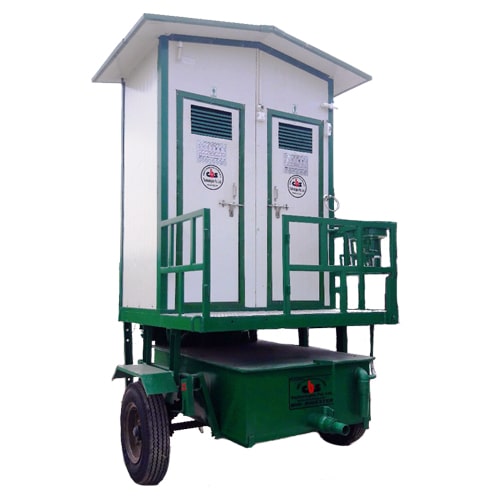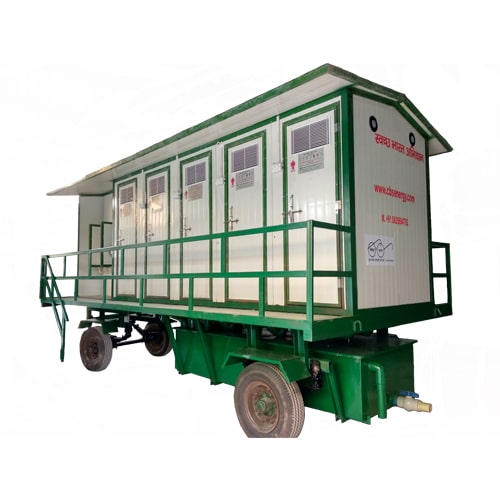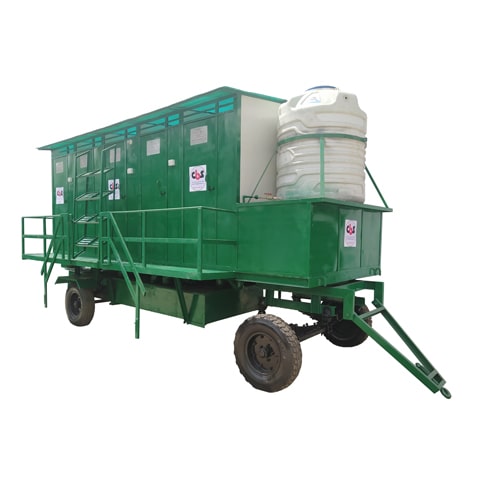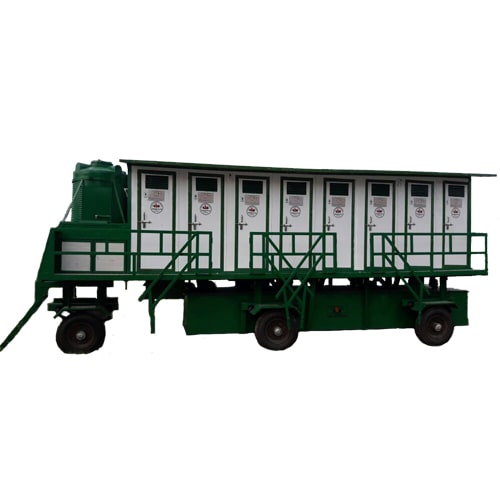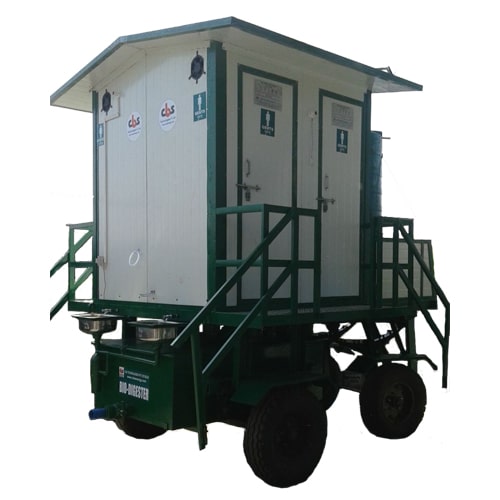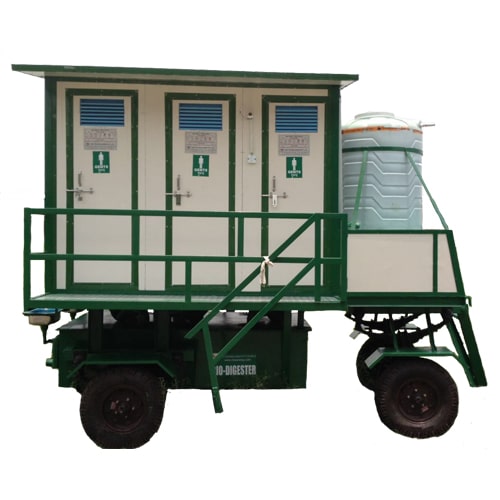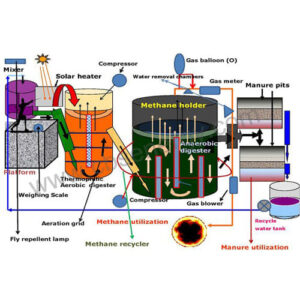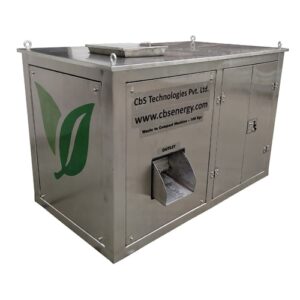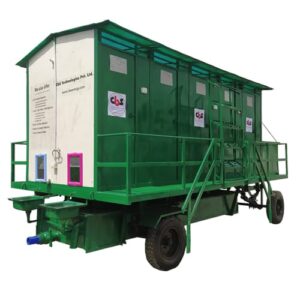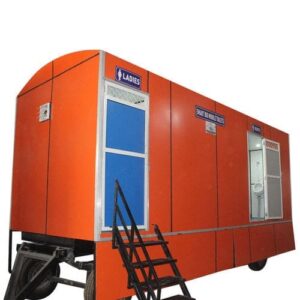Applications:
• Schools and Villages: Promoting hygiene in rural areas.
• Small Communities: Supporting collective sanitation needs.
• Resorts and Construction Sites: Ideal for temporary or remote setups.
• Indian Railways and Defense: Portable and robust sanitation solutions.
• Industrial Factories: Effective for areas without direct sewage connections
Capacities & customization:
1. Stationary Toilets:
• With inbuilt water tank / biodigester tank / sludge tank.
• Single-user to multi-user cabins.
• Capacity: 500 to 5,000 liters.
2. Toilet Cabins:
• FRP (Fiber Reinforced Plastic) cabins connected to biodigester tanks.
• PUF (Polyurethane Foam) insulated cabins connected to biodigester tanks.
3. Mobile Bio Toilet:
• Luxury designs with enhanced aesthetics and comfort.
• Urinary-specific cabins for high-traffic areas
CbS Technologies’ Bio Toilet represent a step forward in sustainable sanitation, addressing critical challenges like water conservation, waste management, and public health. Whether for urban parks, rural communities, or industrial sites, our Bio Toilets provide a robust and eco-friendly solution. By adopting our innovative products, you contribute to a cleaner, greener future.
Frequently Asked Questions (FAQs)
1. What is a Bio Toilet?
A sanitation system that uses anaerobic bacteria to convert waste into biogas and reusable water.
2. How does a Bio Toilet work?
Waste is processed in a bio-digester, producing biogas and treated water.
3. Where can Bio Toilet be used?
They are ideal for public parks, rural areas, and construction sites.
4. How much water does a Bio Toilet save?
It uses minimal water, saving thousands of liters annually.
5. Can biogas from Bio Toilet be used?
Yes, it can be used for cooking, heating, or generating electricity.
6. Do Bio Toilet produce odors?
No, advanced systems ensure odor-free operation.
7. What are the environmental benefits of Bio Toilet?
They conserve water, produce renewable energy, and prevent pollution.
8. How are Bio Toilet maintained?
They require minimal maintenance compared to traditional toilets.
9. Are Bio Toilet useful in disaster relief?
Yes, they provide quick and portable sanitation solutions.
10. Why are Bio Toilet important for sustainable development?
They support water conservation, renewable energy, and eco-friendly waste management.

